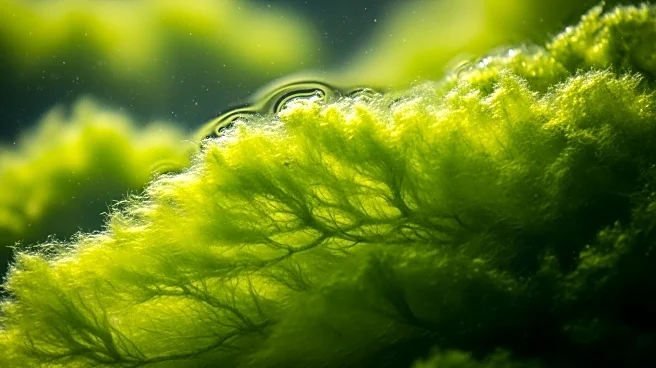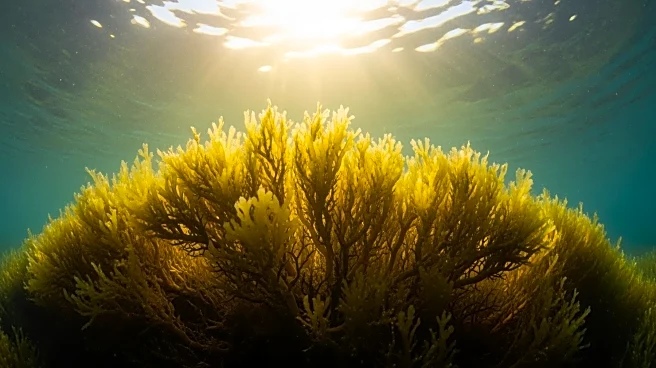What's Happening?
Researchers at Osaka Metropolitan University have discovered how marine green algae protect themselves from intense sunlight. The study reveals that a pigment called siphonein enables algae to continue
photosynthesis efficiently under strong light conditions. This pigment helps dissipate excess energy, preventing damage from reactive oxygen molecules. The findings offer insights into the unique adaptations of algae to underwater environments.
Why It's Important?
The discovery of siphonein's role in protecting algae from sun damage has implications for renewable energy technologies. By understanding how algae manage light exposure, scientists can develop bio-inspired solar systems that are more durable and efficient. This research not only advances knowledge of photosynthesis but also opens avenues for innovative solar energy solutions.











